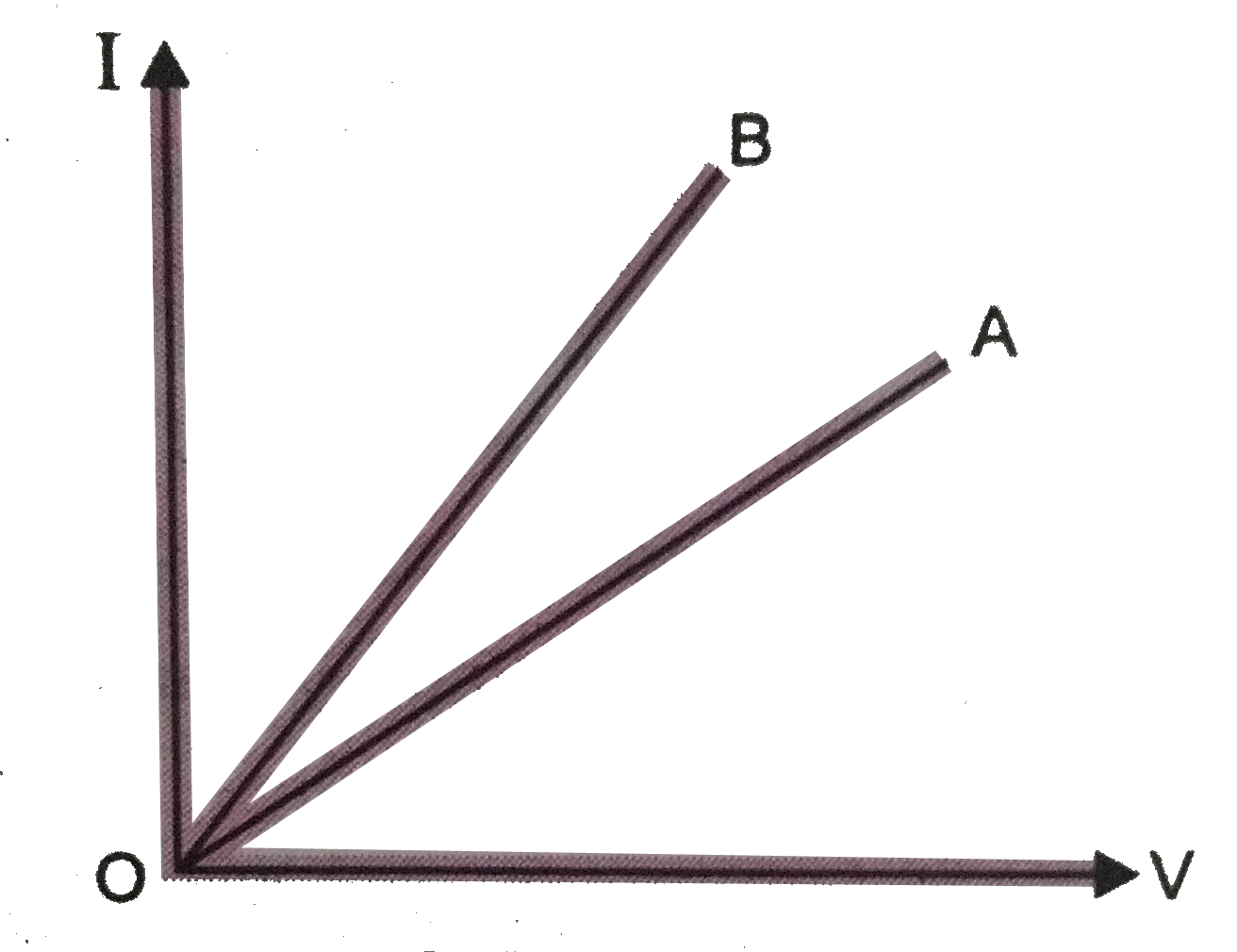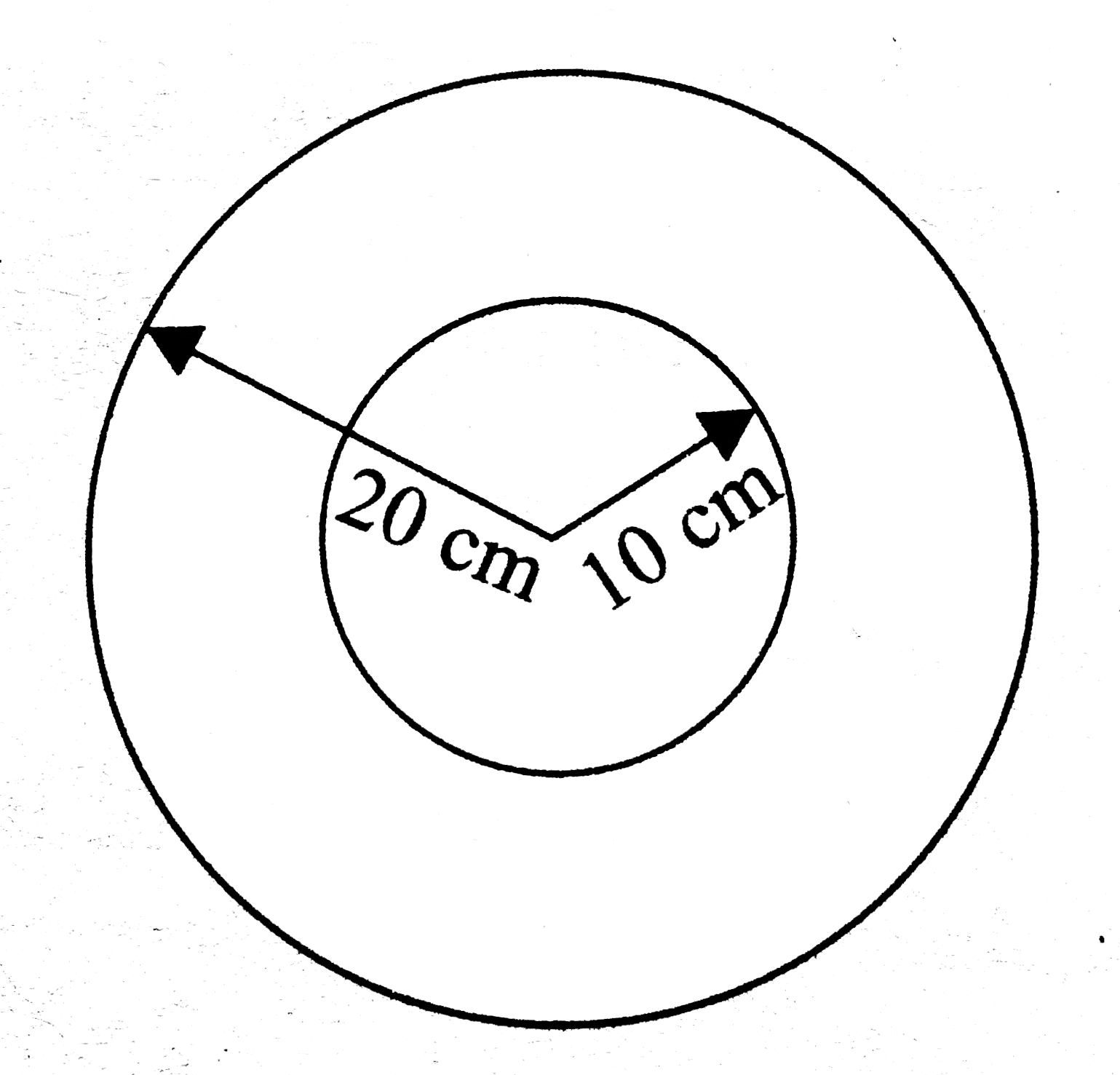An uncharged conducting ball B lies inside a charged conductor A as shown in (Fig. 3.150). B is isolated from A.
 .
.
When B touches the inner surface of A, then potential of B will change.
No net charge is inside the cavity.
There is an induced charge on B.
Potentials of AandB are same.
The correct Answer is:b.,d.
potential everywhere inside a charged conductor is same. Even if we touch A and B, nothing will happen because potential is same prior to touching.
Topper's Solved these Questions
- ELECTRIC POTENTIALBook:CENGAGE PHYSICSChapter:ELECTRIC POTENTIALExercise:Comprehension
Explore 31 Videos
- ELECTRIC POTENTIALBook:CENGAGE PHYSICSChapter:ELECTRIC POTENTIALExercise:Integer
Explore 5 Videos
- ELECTRIC POTENTIALBook:CENGAGE PHYSICSChapter:ELECTRIC POTENTIALExercise:Single Correct
Explore 56 Videos
- ELECTRIC FLUX AND GAUSS LAWBook:CENGAGE PHYSICSChapter:ELECTRIC FLUX AND GAUSS LAWExercise:MCQ s
Explore 38 Videos
- ELECTRICAL MEASURING INSTRUMENTSBook:CENGAGE PHYSICSChapter:ELECTRICAL MEASURING INSTRUMENTSExercise:M.C.Q
Explore 2 Videos
Similar Questions
Graphs between electric current and potential difference across two conductors AandB are as shown in (Fig. 3.49). Which of the two conductors has more resistance ?
 .
.
View SolutionA point charge Q is situated (outside) at a distance r from the centre of an uncharged conducting solid sphere of radius R. The potential due to induced charges (on the conductor) at a point B inside the conductor whose distance form the point charge is d is ______
View Solution
Knowledge Check
There are two coils A and B as shown in Fig.
 AWhen switch S is closed, the direction of the momentary current induced in coil B will be in anticlockwise directionBWhen switch S is closed, the direction of the momentary current induced in coil B will be in clockwise direction.CWhen switch S is opened, the direction of the momentary induced current in coil B will be in clockwise directionDWhen switch S is opened, the direction of the momentary induced current in coil B will be in anticlockwise direction.
AWhen switch S is closed, the direction of the momentary current induced in coil B will be in anticlockwise directionBWhen switch S is closed, the direction of the momentary current induced in coil B will be in clockwise direction.CWhen switch S is opened, the direction of the momentary induced current in coil B will be in clockwise directionDWhen switch S is opened, the direction of the momentary induced current in coil B will be in anticlockwise direction.We have an isolated conducting spherical shell of radius 10cm. Some positive charge is given to it so that the resulting electric field has a maximum intensity of 1.8×106NC−1. The same amount of negative charge is given to another isolated conducting spherical shell of radius 20cm. Now, the first shell is placed inside the second so that both are concentric as shown in (Fig. 3.154).
 .
.
If both the spheres are connected by a conducting wire, then.Anothing will happen.Bsome part of the energy stored in the system will convert into heat.Ccharge on both spheres will be positive.Dentire amount of the energy stored in the system will convert into heat.An uncharged conductor A is brought near a positively charged conductor B. The size of the conductor A is much greater than the size of conductor B. Then,
Athe charge on B will increase, but the potential of B will not changeBthe charge on B will not change, but the potential of B will decreaseCthe charge on B will decrease, but the potential of B will not change 0Dthe charge on B will not change, but the potential of B will increase
Three concentric conducting shells of radii a, b and c are shown in (Fig. 3.100). Charge on the shell of radius b is Q. If the key K is closed, find the charges on the innermost and outermost shells and the radio of charge densities of the shells. Given that a:b:c=1:2:3.
View SolutionInside a charged thin conducting shell of radius R, a point charge +Q is placed as shown in figure potential of shell may be

View SolutionWe have an isolated conducting spherical shell of radius 10cm. Some positive charge is given to it so that the resulting electric field has a maximum intensity of 1.8×106NC−1. The same amount of negative charge is given to another isolated conducting spherical shell of radius 20cm. Now, the first shell is placed inside the second so that both are concentric as shown in (Fig. 3.154).
 .
.
The electric potential at any point inside the first shell is.
View SolutionWe have an isolated conducting spherical shell of radius 10cm. Some positive charge is given to it so that the resulting electric field has a maximum intensity of 1.8×106NC−1. The same amount of negative charge is given to another isolated conducting spherical shell of radius 20cm. Now, the first shell is placed inside the second so that both are concentric as shown in (Fig. 3.154).
 .
.
The electrostatic energy stored in the system is.
View SolutionWe have an isolated conducting spherical shell of radius 10cm. Some positive charge is given to it so that the resulting electric field has a maximum intensity of 1.8×106NC−1. The same amount of negative charge is given to another isolated conducting spherical shell of radius 20cm. Now, the first shell is placed inside the second so that both are concentric as shown in (Fig. 3.154).
 .
.
The electric field intensity just inside the outer sphere.
View Solution

